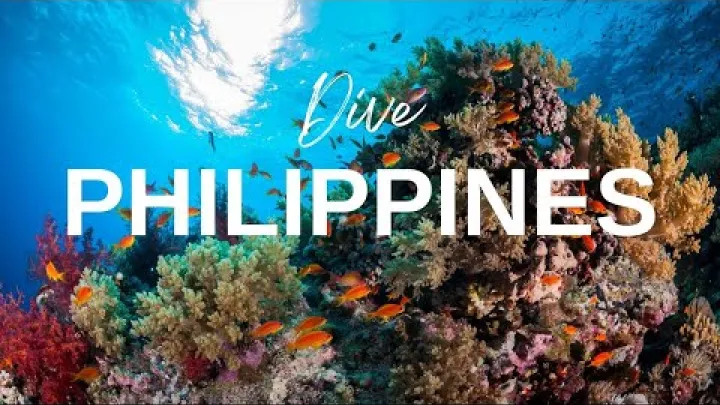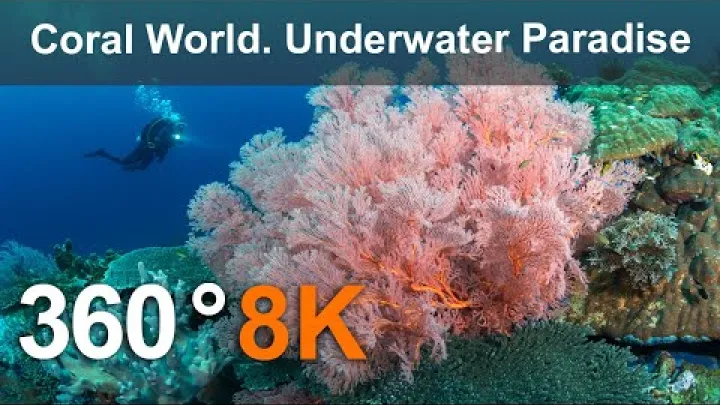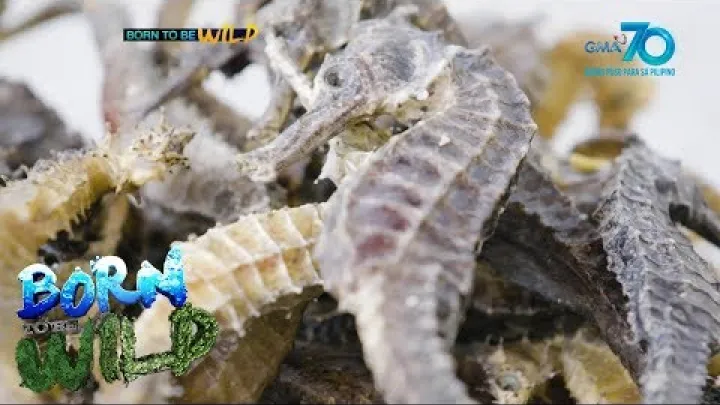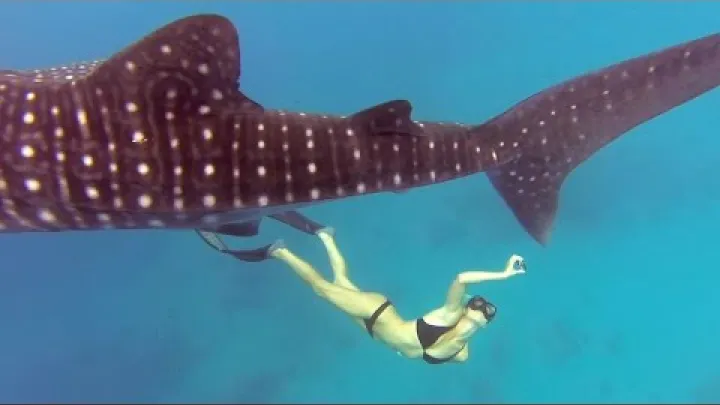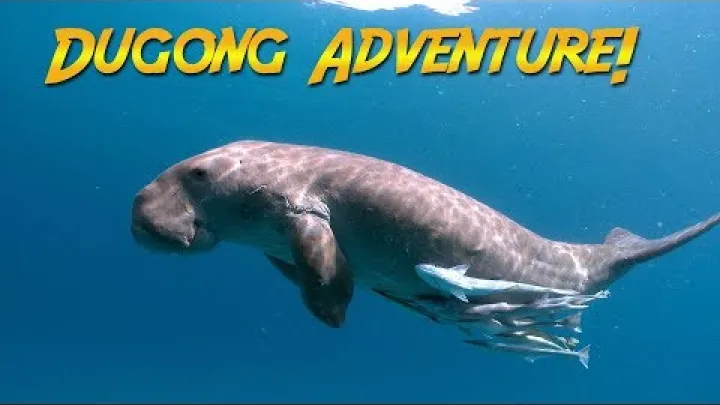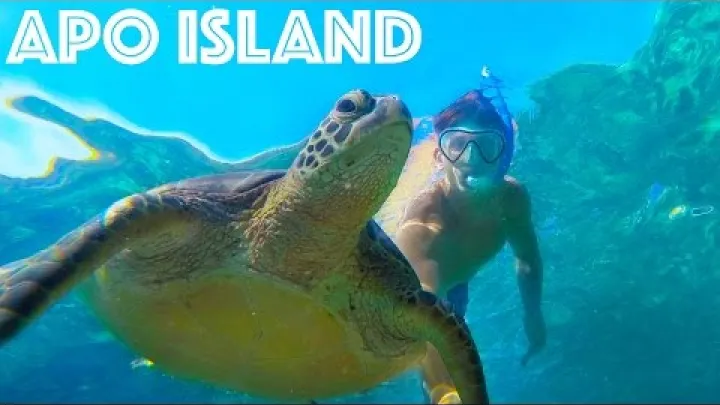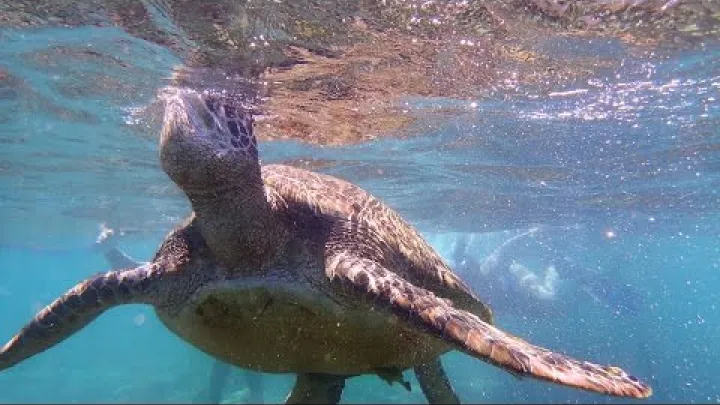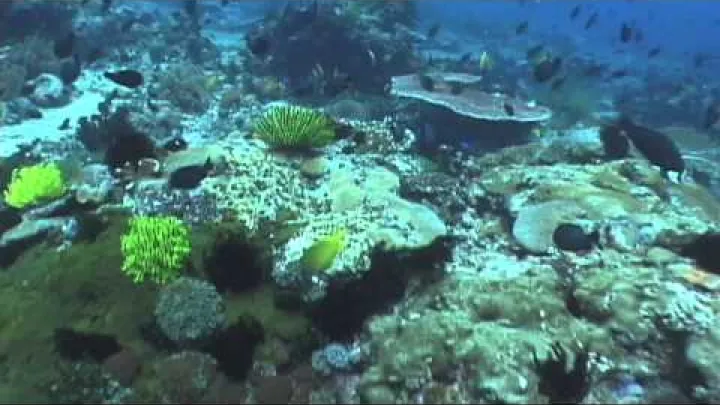The Enchanting Secrets of the Philippine Sea: Unveiling the Majestic Marine Wonders
Welcome to the mesmerizing world of the Philippine Sea, where enchantment lies beneath the waves. Prepare to be captivated as we journey into the depths to unveil the majestic marine wonders that await. From vibrant coral reefs teeming with life to mystical underwater caves shrouded in mystery, the Philippine Sea is a treasure trove of natural beauty.
Immerse yourself in the vibrant hues of the coral gardens, where a kaleidoscope of tropical fish dance among intricate coral formations. Glide alongside graceful sea turtles as they gracefully navigate through crystal-clear waters. Discover the secret hideaways of the elusive seahorses, their delicate forms blending seamlessly with the sea grass.
But the Philippine Sea doesn't just boast a dazzling array of marine life. It is also home to the enchanting Tubbataha Reefs Natural Park, a UNESCO World Heritage site, where pristine reefs and endangered species flourish. Dive into a world brimming with wonder as you encounter gentle giants such as whale sharks and elusive manta rays gliding effortlessly through the cobalt-blue depths.
Bring your sense of adventure and prepare to be spellbound as we embark on this journey of discovery through the captivating secrets of the Philippine Sea.
Importance of the Philippine Sea's marine ecosystem
The Philippine Sea is a vital part of the global marine ecosystem, playing a crucial role in maintaining biodiversity and supporting the livelihoods of coastal communities. Its diverse habitats, including coral reefs, seagrass meadows, and mangrove forests, provide valuable breeding grounds and nurseries for numerous marine species.
These ecosystems also act as natural barriers, protecting coastal areas from the destructive forces of storms and waves. The coral reefs, in particular, help to dissipate wave energy and prevent erosion, safeguarding the fragile coastlines of the Philippines.
Coral reefs in the Philippine Sea
One of the most breathtaking features of the Philippine Sea is its vibrant coral reefs. These underwater gardens are a sight to behold, with their colorful corals and a kaleidoscope of tropical fish. The reefs are made up of tiny coral polyps that form intricate structures, providing shelter and food for countless marine organisms.
The Tubbataha Reefs Natural Park, a UNESCO World Heritage site located in the Sulu Sea, is a prime example of the stunning coral reefs found in the Philippine Sea. This marine sanctuary boasts over 360 species of coral and is home to a vast array of marine life, including sea turtles, reef sharks, and manta rays.
Unique marine species found in the Philippine Sea
The Philippine Sea is a biodiversity hotspot, harboring an astounding variety of marine species. From the smallest seahorses to the largest whale sharks, this marine wonderland is teeming with unique and fascinating creatures.
One of the most iconic species found in the Philippine Sea is the whale shark. These gentle giants, known as "butanding" in the local language, can grow up to 40 feet in length and are the largest fish in the world. Despite their size, whale sharks are filter feeders, scooping up plankton and small fish with their enormous mouths.
Another remarkable creature found in the Philippine Sea is the dugong, or "sea cow." These herbivorous marine mammals are known for their gentle nature and unique appearance. With their rounded bodies and paddle-like tails, they gracefully glide through the shallow waters, grazing on seagrass beds.
Diving and snorkeling spots in the Philippine Sea
For diving enthusiasts and snorkelers alike, the Philippine Sea offers an abundance of world-class sites to explore. Whether you're a beginner or an experienced diver, there are numerous spots that cater to all skill levels.
One of the most popular diving destinations in the Philippine Sea is Apo Island. Located off the coast of Negros Oriental, this small volcanic island is renowned for its crystal-clear waters and vibrant coral reefs. Divers can encounter an impressive variety of marine life, including sea turtles, colorful reef fish, and even the occasional reef shark.
If you're seeking a more adventurous experience, head to the Tubbataha Reefs Natural Park. This remote marine sanctuary is only accessible by liveaboard boat and offers some of the best diving in the world. The park's pristine reefs are home to an incredible array of marine species, making it a paradise for underwater photography enthusiasts.
Conservation efforts in the Philippine Sea
Recognizing the importance of preserving the marine ecosystems in the Philippine Sea, various conservation efforts are underway to protect its fragile habitats and species. Non-governmental organizations, government agencies, and local communities are working together to implement sustainable fishing practices, establish marine protected areas, and raise awareness about the importance of conservation.
One notable conservation initiative is the establishment of marine sanctuaries and protected areas, such as the Tubbataha Reefs Natural Park and the Apo Island Marine Reserve. These protected areas help to limit human impacts on the marine environment and provide a safe haven for marine species to thrive.
Threats to the marine ecosystem in the Philippine Sea
Despite the conservation efforts, the marine ecosystem in the Philippine Sea faces numerous threats. Overfishing, destructive fishing practices, pollution, and climate change are some of the major challenges that put the delicate balance of this ecosystem at risk.
Overfishing, in particular, poses a significant threat to the marine biodiversity of the Philippine Sea. The demand for seafood, both locally and internationally, has led to unsustainable fishing practices, such as the use of dynamite fishing and illegal fishing methods. These practices not only devastate fish populations but also cause irreversible damage to coral reefs and other marine habitats.
Responsible tourism in the Philippine Sea
As travelers, it is our responsibility to ensure that our actions do not harm the marine ecosystems we visit. When exploring the Philippine Sea, practicing responsible tourism is essential to minimize our impact on the environment.
Some key principles of responsible tourism in the Philippine Sea include:
Avoiding physical contact with marine life: While it may be tempting to touch or chase after marine creatures, it is important to remember that they are wild animals and should be observed from a respectful distance.
Choosing environmentally friendly tour operators: When booking diving or snorkeling trips, opt for operators that follow sustainable practices, such as limiting the number of participants, providing environmental education, and supporting local conservation initiatives.
Minimizing waste and pollution: Dispose of trash properly, and consider using reef-safe sunscreen to protect the coral reefs from harmful chemicals.
Best times to visit the Philippine Sea for marine exploration
The Philippine Sea is a year-round destination for marine exploration, but the best time to visit depends on the specific activities you plan to undertake. The country experiences two main seasons: the dry season (November to April) and the wet season (May to October).
For divers and snorkelers, the dry season is generally recommended, as the sea conditions are calmer, providing better visibility. During this period, you can expect warm waters and clear skies, making it ideal for underwater photography and exploring the vibrant coral reefs.
Conclusion: The enchantment and beauty of the Philippine Sea
In conclusion, the Philippine Sea is a mesmerizing destination that holds countless secrets and wonders beneath its waves. From the vibrant coral reefs to the unique marine species, this marine paradise is a testament to the beauty and complexity of our natural world.
As visitors, it is our duty to appreciate and protect this enchanting ecosystem. By practicing responsible tourism and supporting conservation efforts, we can ensure that the Philippine Sea continues to captivate and inspire generations to come. So, dive into the depths, explore the secret treasures, and let the enchantment of the Philippine Sea leave an indelible mark on your heart.
Your Nearby Location
Your Favorite
Post content
All posting is Free of charge and registration is Not required.
